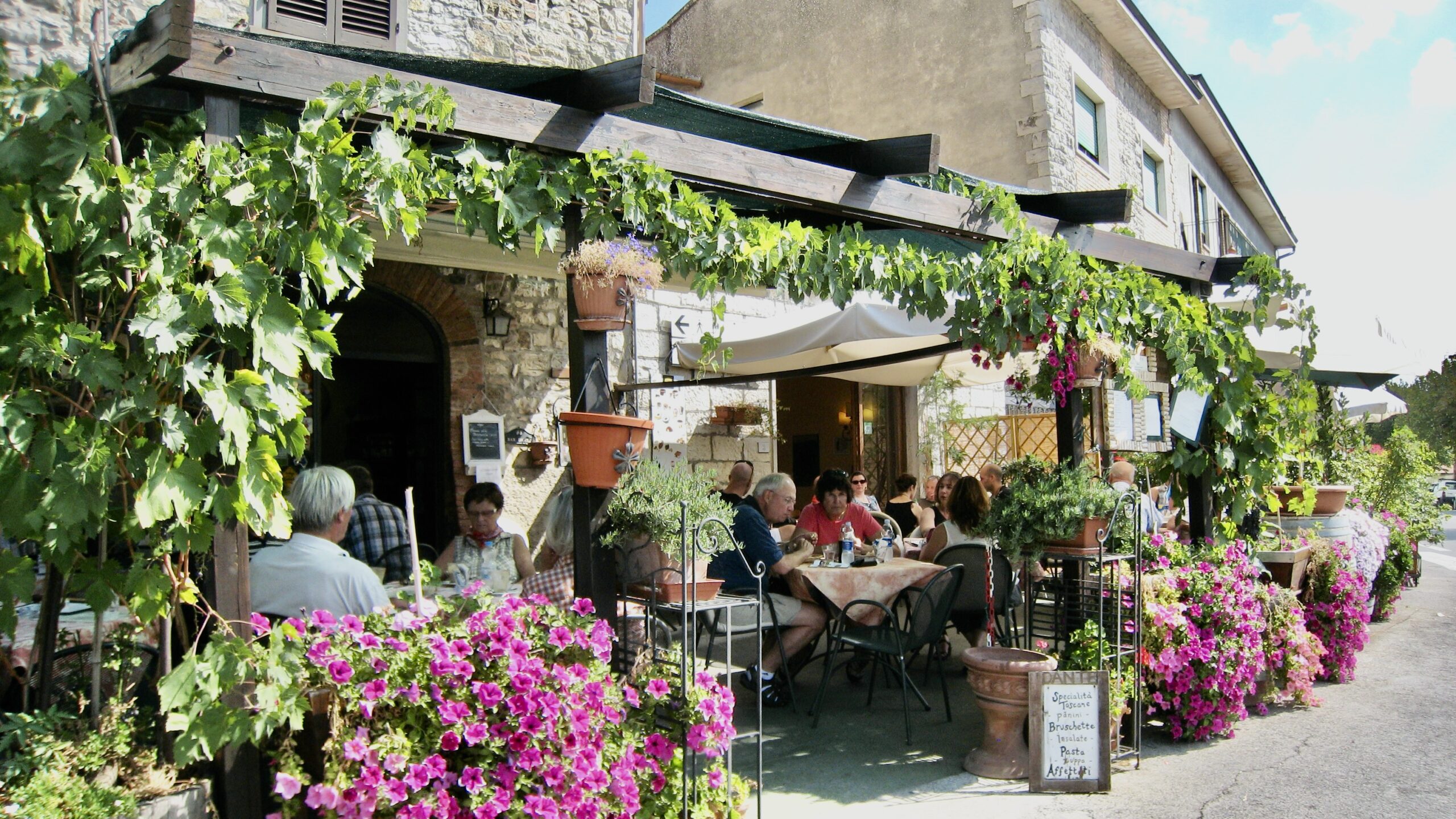It’s mid-September and something is missing in Tuscany. It’s too late for the golden fields of sunflowers and too early for the glowing foliage of vines. I settle for rounded hills poked by stone houses at the end of alleys of cypresses. Here and there, long coats of olive groves and vineyards cover the slopes. The relentless work of men groomed a barren landscape of rocky soil into a land of bounty, alongside dense forests wrinkled by ravines.
Here, Chianti is King. Some are still served from traditional flasks wrapped in straw and perhaps recycled as candleholders, but Chianti is a structured wine now. Regular Chianti must contain at least 70 percent Sangiovese—one of the world’s superstar grape varieties—and Chianti Classico 80 percent. Strict regulations put an end to the often mouth-puckering wines of the past.
A Village with a Past
Our van claws its way up a rocky dirt road. The view from the renovated farmhouse we rented is as we expected. Olive trees and vineyards run down a valley. We are in Castellina, in the province of Siena, where life unfolds, one meal, one glass of wine, and one moment at a time.
At 620 meters of elevation, Castellina in Chianti is the highest of the Chianti villages. It was a strategic advantage during the Florence and Siena centuries-long territorial feuds. What’s left of the Golden Age of the Etruscan civilization—Tuscany is a derivative of Etruscan—are the tunnels. Dominated by La Rocca, the tower that houses the archeological museum, the tunnels were gentrified into via Volte, and tenanted by restaurants and artisan shops.
Castellina is the cradle of the original Chianti. For this reason, the Enoteca Antiquaria inside Palazzo Squarcialupi holds the archives of the Chianti Classico—with the black rooster emblem.
The medieval village is also the keeper of Lorenzo di Bicci’s 14th-century fresco of the Virgin Mary—which was ‘miraculously’ spared when the San Salvatore Church was mostly destroyed during WWII. From there, the via Ferruccio becomes pedestrianized for a pleasant stroll to the Tourist Office, shops, restaurants, and merchant stalls.
From One Chianti Village to the Next
Narrow roads with hairpin curves up and down the hills lead us to two villages and two wineries per day. It’s all that time and sobriety can muster, plus slow lunches. In some wineries, taste and spit is hardly an option when copious food is served along with generously poured wine.
It is soon apparent that the 14 villages under the Chianti appellation have much in common. First, they are entitled to the words in Chianti after their names. They also all have a church, an abbey or a convent, palazzos, and, of course, wine-tasting shops and quaint restaurants, often set amid what’s left of their fortifications. And true to the romanticized image of Tuscany, cypress trees punctuate the verdant countryside like exclamation marks.
A few facts give a distinctive touristic identity to these villages, enough for me to remember the essentials. Whether it’s a castle, church, painting, statue, or crucifix, each village has something exceptional from time immemorial.
In Radda, it’s the peaceful setting of the town center and the elegant studio of a fashion designer next to a captivating gilding workshop. Along the cobblestone streets and stone walls, I wonder how many noble families lived here, at least as many as the number of hotels that bear the name Palazzo.
In Greve, the triangular Piazza Matteotti has been holding a Saturday market since the 13th century, tradition doesn’t die easily in Chianti; one butcher shop dates back to 1729. The arched portico alongside the piazza now offers shade for outdoor dining and access to the tourist shops.
In Castellina, we visit the Azienda Agricola San Donatino. I speak French with Maria Cristina Diaz, the Spanish widow of Léo Ferré, a famous poet and singer whose family has grown wine in Chianti since 1971. From this traditional ‘under the Tuscan sun’ overlooking the valley, I imagine Ferré under the Tuscan sun and his muse in the vineyard or among the 5,000 olive trees the family cares for.
In Panzano, a hilltop halfway between Florence and Siena, we overdo wine tasting thanks to the jovial winemakers at the annual wine festival. We take a break with a fast-melting gelato of pistachio, lemon, and hazelnut while easily identifying visitors on Vespas and in Fiats 500.
In Gaiole, we leave the SR222—the old Chiantigiana road—for the meandering road to the 15th-century hamlet of Ama. There, two locations for wine and olive oil tastings illustrate two distinct lifestyles. One is in the nobility of Castillo di Ama with its unusual open-air art collection and patrician setting. The other is in the conviviality of Casanuova di Ama set in the dwelling of its former sharecroppers.
Perhaps because Ama means Love, our last day in Tuscany fills us with sweet visions of the dolce vita that hovers in each village.
What about the food, you might ask? Ah, after an Italian friend asked me to repeat aloud that I like Italian food better than French food—my native food—I held the Chianti Classico responsible.
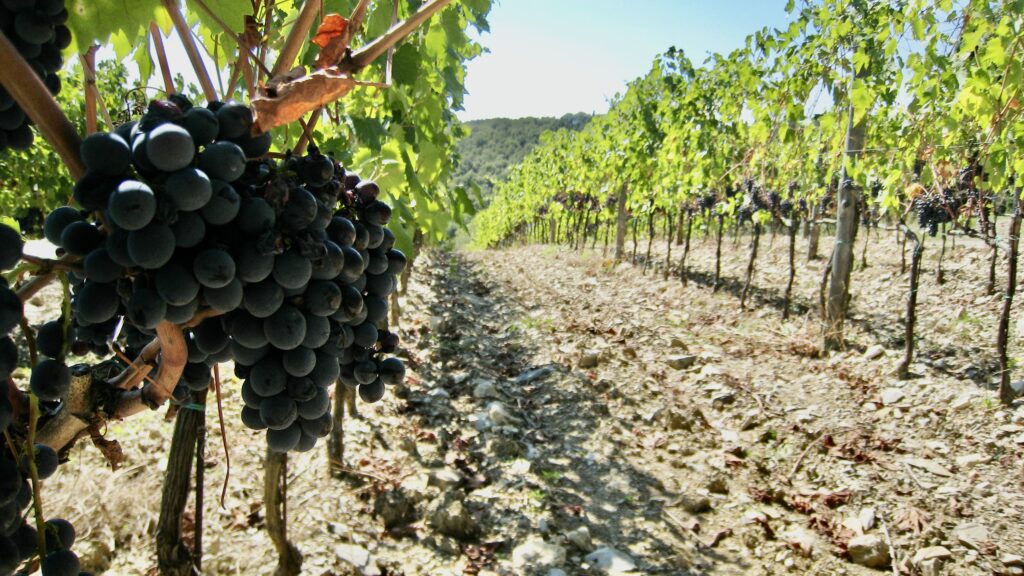
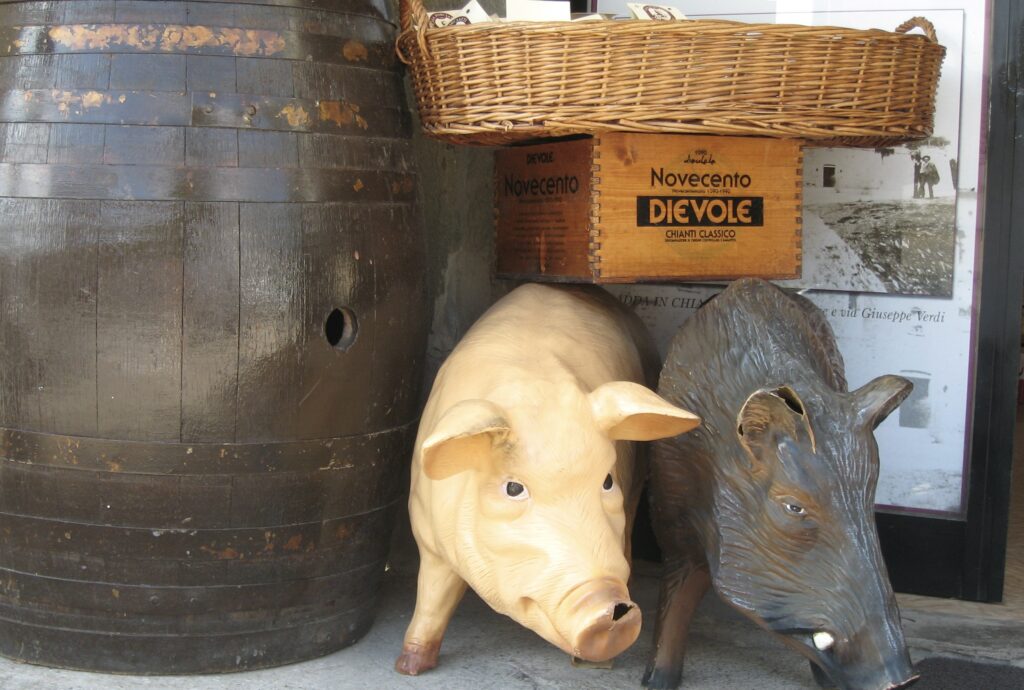

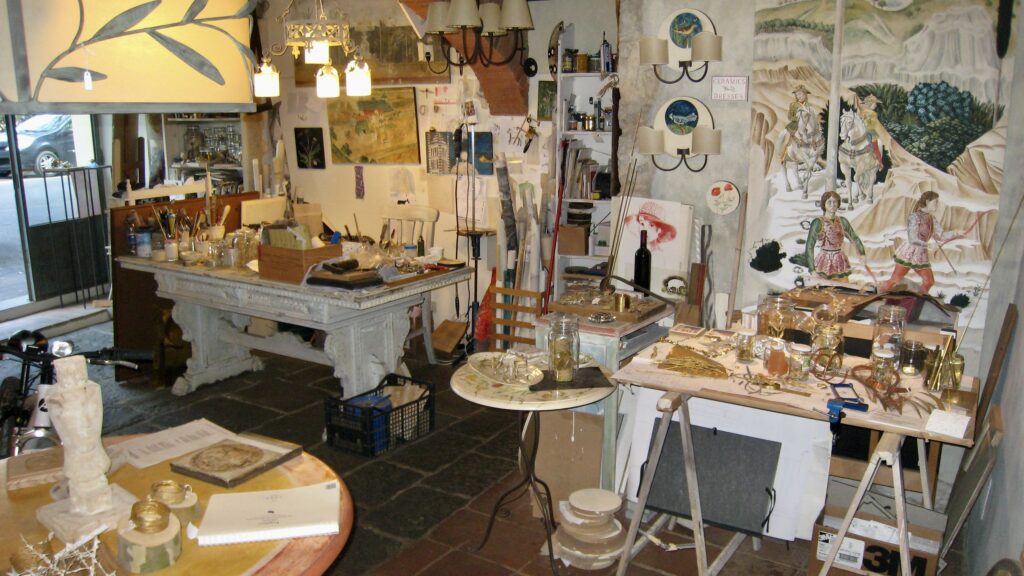
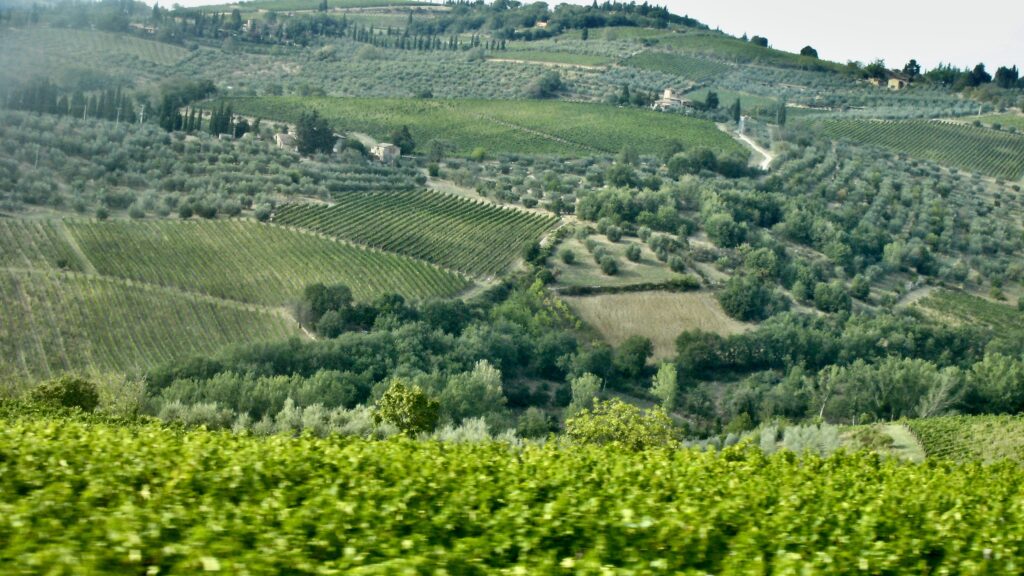
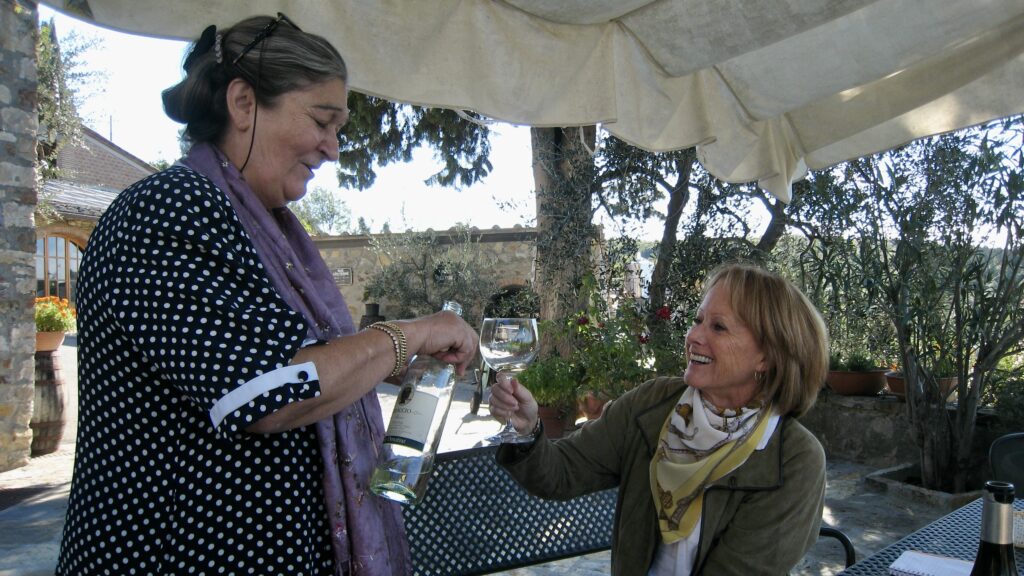
Previously published Buckettriper.com 2012 – revised 2022

